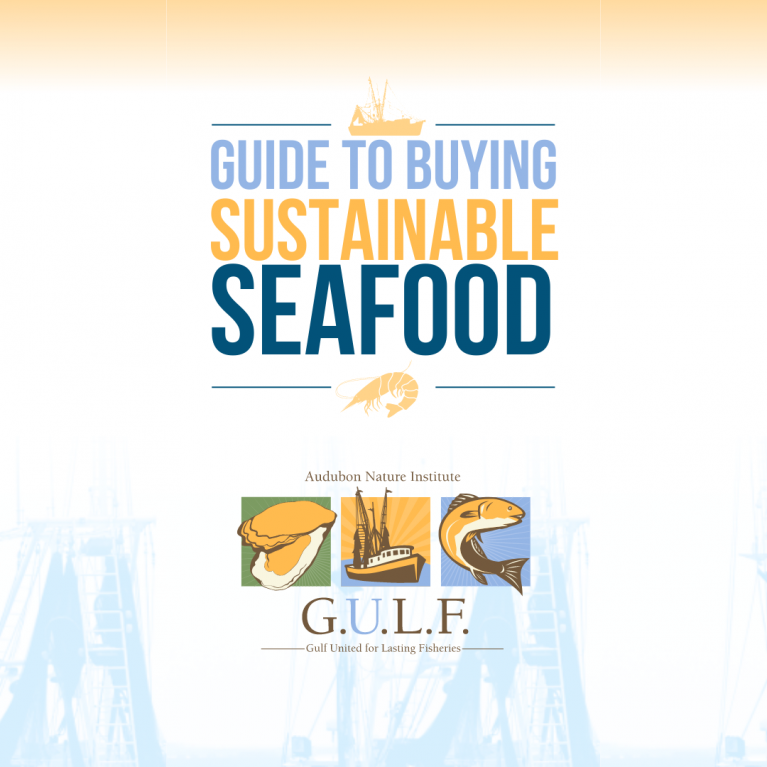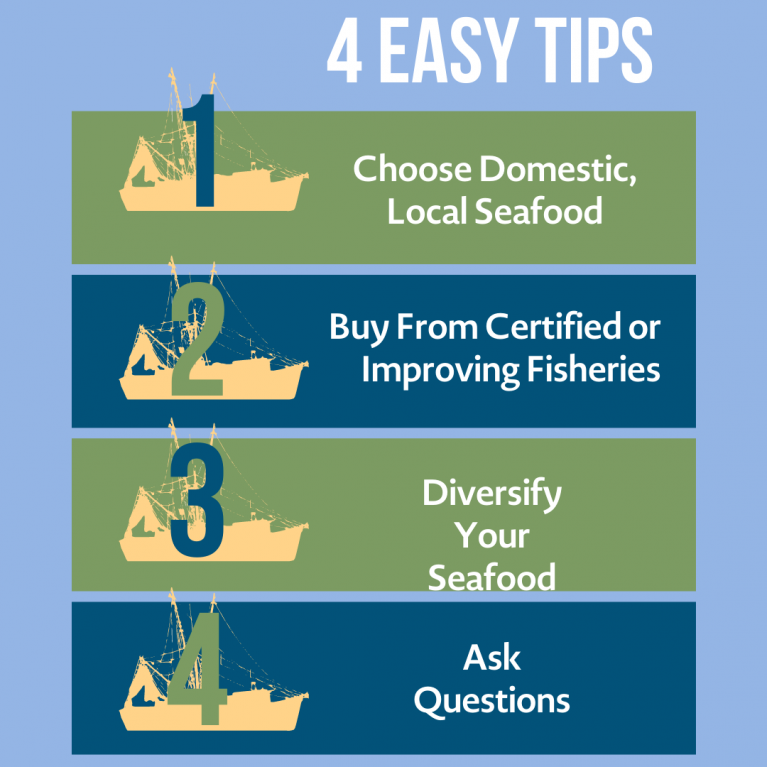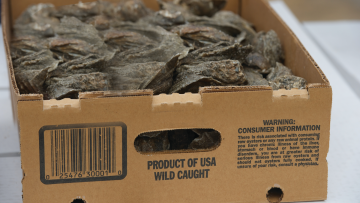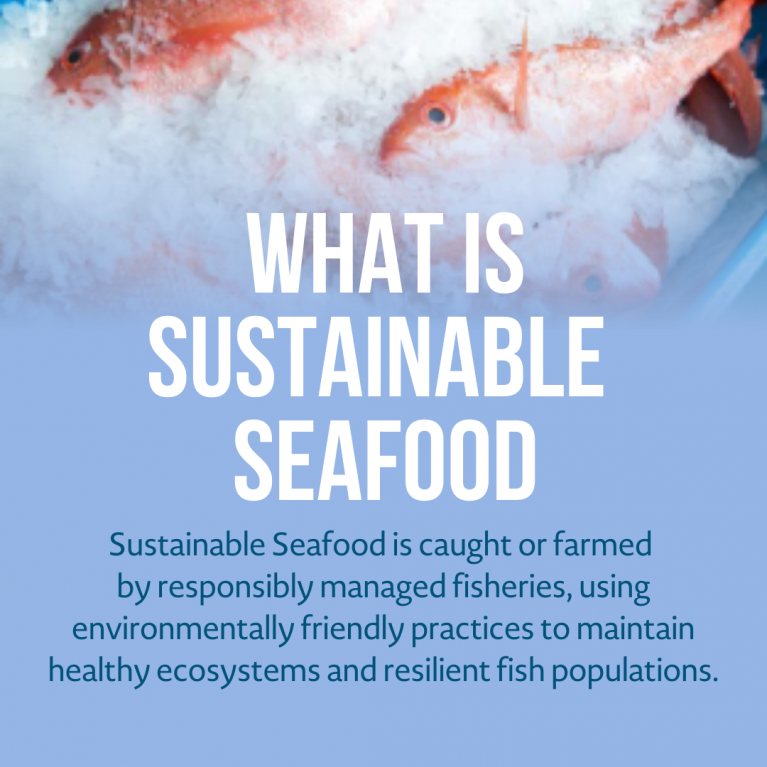
Image courtesy of Audubon Nature Institute.
October is National Seafood Month and one of the best ways to celebrate is by making sustainable seafood choices! Shopping sustainably shouldn’t be hard, so Audubon Nature Institute’s Gulf United for Lasting Fisheries (GULF) has put together a few tips to help you make responsible seafood choices.
4 Easy Tips for Buying Sustainable Seafood

Image courtesy of Audubon Nature Institute.
Choose seafood from domestic, local sources
The United States is a global leader in seafood sustainability and responsible fisheries management, so by purchasing seafood from domestic fisheries, you support the health and sustainability of our ecosystems, the economy, and sustainability efforts of the seafood industry!

Image courtesy of Audubon Nature Institute.
You can identify U.S. domestic product by looking for a country-of-origin label when purchasing seafood at the store. The National Ocean and Atmospheric Association (NOAA) also provides current information on the status and management practices of U.S. domestic fisheries through status reports and stock assessments and resources like FishWatch, to help consumers make educated decisions.
Look for seafood from certified or improving fisheries
Certification is a great way to identify sustainable seafood in the marketplace and is often recognizable by a logo on its packaging. Certification schemes assess fisheries to verify their sustainability, allowing consumers to be confident they are purchasing a sustainable product. Look for GSSI-recognized certification schemes, which have been evaluated to ensure they meet the highest international standards.

Image courtesy of Audubon Nature Institute.
Many fisheries are also active participants in improvement projects allowing them to address challenges and improve the fishery’s sustainability. You can follow the progress of Fishery Improvement Projects (FIPs) via FisheryProgress.org and find up-to-date information on a fishery’s certification or improvement status through resources such as FishChoice and FishSource.
Diversify your seafood
Within the U.S., consumers predominantly buy the same five types of seafood – shrimp, tuna, salmon, tilapia, and Alaska pollock. This demand can put excessive pressure on these fisheries and lead to unsustainable fishing and/or increased import of these species from non-domestic sources.

Image courtesy of Audubon Nature Institute.
Varying the seafood you purchase and eating a mix of flash-frozen and fresh seafood are easy ways to diversify your diet and enjoy the nutritional benefits seafood has to offer, while supporting the health and sustainability of local fisheries. Seafood Nutrition Partnership is a great place too find information about the health benefits of different seafood species and recipes you can use to work new seafood into your diet.
Seasonality also plays a key role in the sustainability of fresh, local seafood. Seafood that is in-season locally is usually more readily available than other species. Utilize seafood guides local to your region, like Alabama Gulf Seafood, to make informed, in-season seafood choices.
Ask about sustainability where you shop

Image courtesy of Audubon Nature Institute.
Learn how stores and markets source their seafood to ensure they align with your values! Many grocery chains in the U.S. have commitments to sustainable seafood and share sourcing policies and sustainability pledges on their websites and in online databases like the Ocean Disclosure Project. Speaking directly with fishmongers or employees at a store’s seafood counter is also a great way to learn about sourcing of your seafood products.
When looking to purchase seafood directly from the source, use tools like Louisiana Direct Seafood and the Local Catch Network to connect directly with local fishermen and fishmongers!
Looking to take these tips with you as you shop? Download a mobile copy of GULF’s Guide to Buying Sustainable Seafood here!